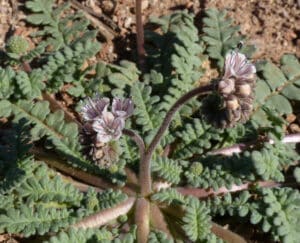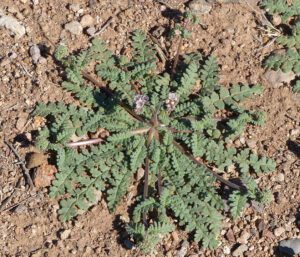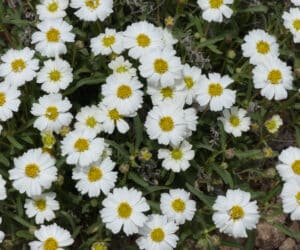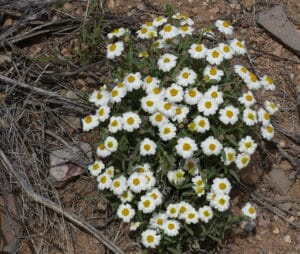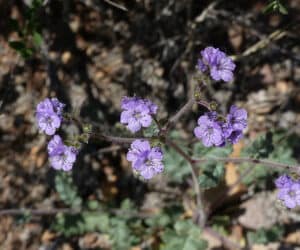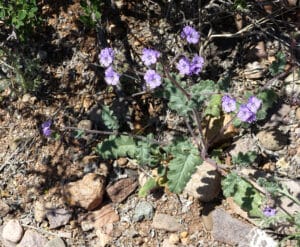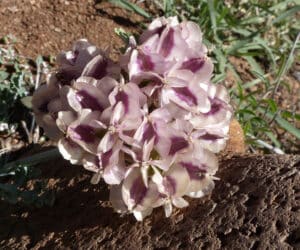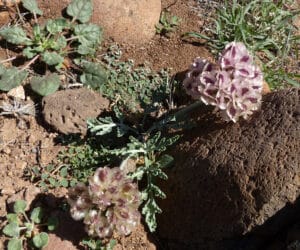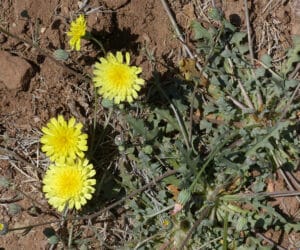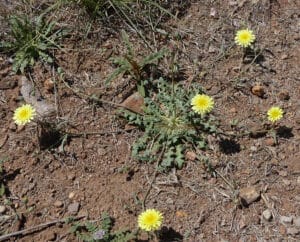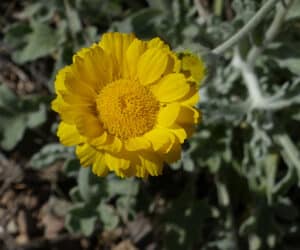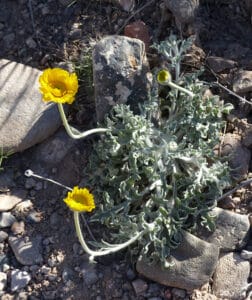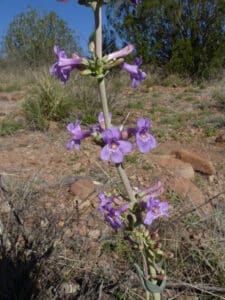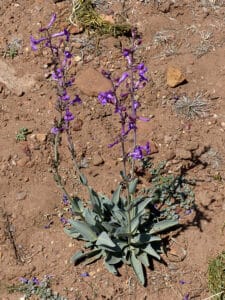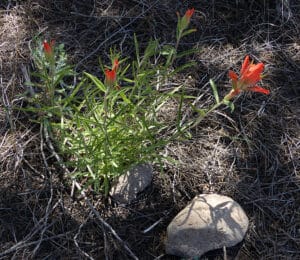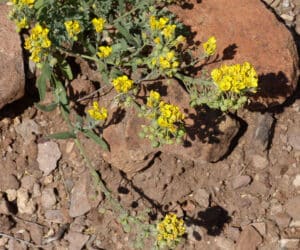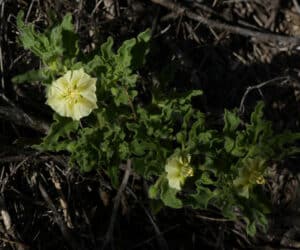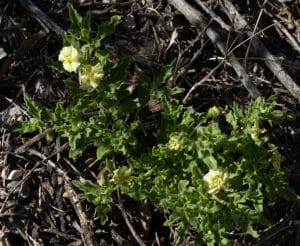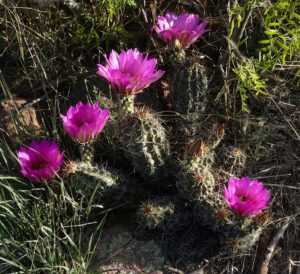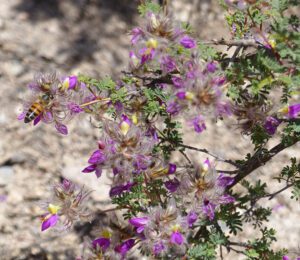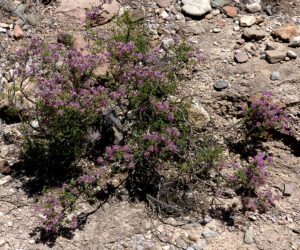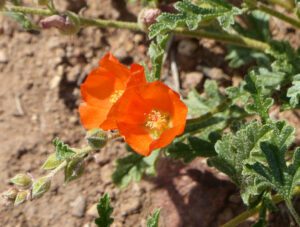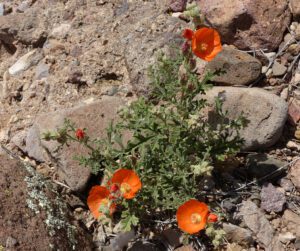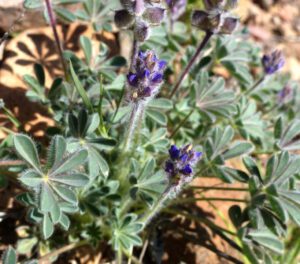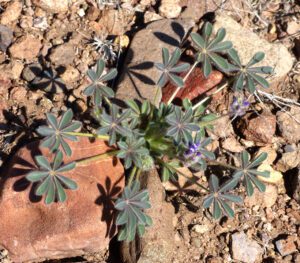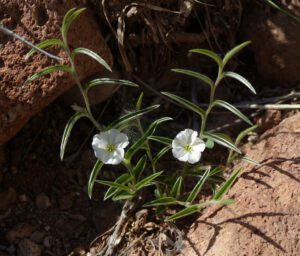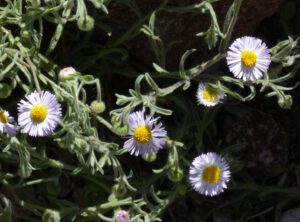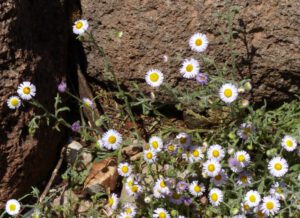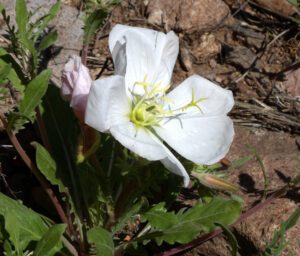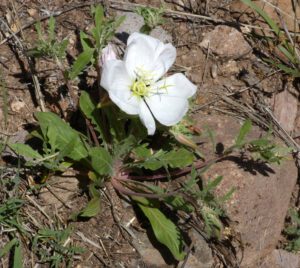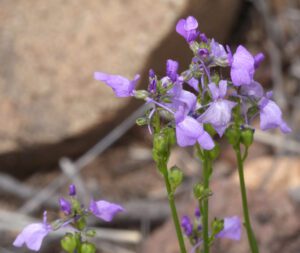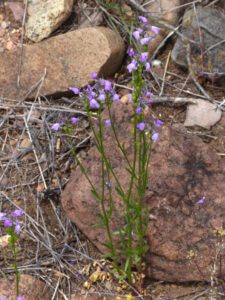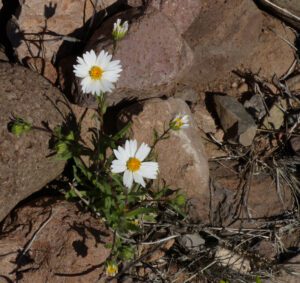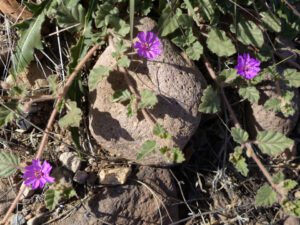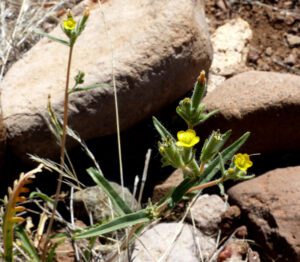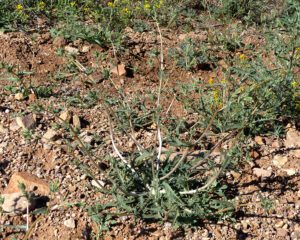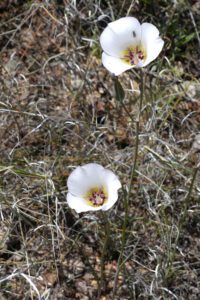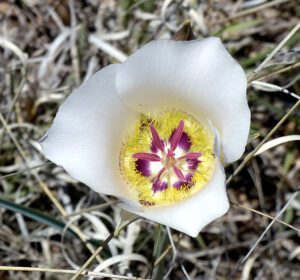Following a Moist Late Winter and Early Spring, an Amazing Extravagance of Wildflowers Emerges at Casitas de Gila Guesthouses in Southwest New Mexico
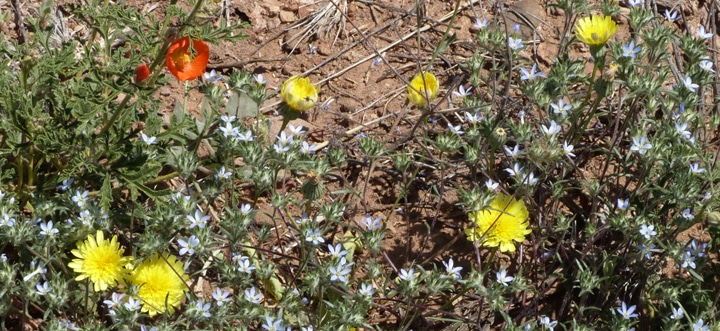
THE EXCEPTIONAL BLOOMING OF SPRING FLOWERS AFTER A WET LATE WINTER
When there is rain in Southwest New Mexico during the late winter months of January and February and the spring months of March and early April, there can be many early-Spring wildflowers to be seen at Casitas de Gila Guesthouses. By the end of April, generally, the wet weather is over and the ground will begin to dry. But the wildflowers will be prolific for several more weeks!
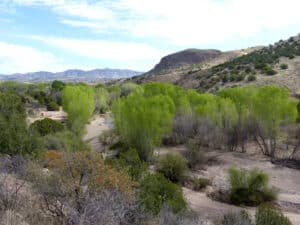
Since no rain had been received at the Casitas after early April it seemed likely that the flowering would soon come to an end as April is traditionally a dry month in Southwest New Mexico. However, this was not the case! The flowering continues, steadily at first, and reaching a crescendo by the third week in April. During these three weeks it seemed that almost every day a bright, new face was discovered flowering in exuberant glory along the trails, challenging one’s attention with a soft whispering of “betcha you don’t know who I am”!
And, for this botany-challenged geologist-cum-naturalist, more often than not they were right! Because, for many of them, one could not remember ever seeing them before, let alone knowing their name. And after many years of traipsing the trails over these Casita lands, it was more than a little disconcerting to feel like a stranger in a foreign land.
BOTANICAL NOMENCLATURE – A TAXING EXPERIENCE
For the dilettante, botanical taxonomy can be a rather taxing experience … and so it is for the identification of all of these flowers. Consulting the several books and general field guides on hand regarding common wild flowers of the Southwest (guides that had proved so helpful in the past) proved to be essentially futile, and did nothing more than confirm that, yes, some of these flowers were, evidently, not so common!
Fortunately, however, and as referenced in previous writings on this blog, there is an excellent guide available to help aspiring botanists who are interested in the plants of Southwest New Mexico. This guide is the comprehensive on-line guide: Vascular Plants of the Gila Wilderness by Dr. Russ Kleinman, Associate Botanist, Zimmerman Herbarium at Western New Mexico University, Department of Natural Sciences. This invaluable guide provides access by means of photos and descriptions to over 1,100 of the approximately 1,500 species of vascular plants found in the Gila Wilderness and vicinity. The guide consists of an extensive website that includes a presentation and listing of these 1,100+ species of plants by major plant categories, scientific names, common names, and a printable checklist, as well as links to other useful guides, collections, and information.
So, after several days of clicking and comparing, one by one, the photos and descriptions of the 1,100+ species covered in this guide with the personal photos and observed characteristics made of the April flowers proliferating at the Casitas, most, but not all, were successfully identified. Probably most of the remaining unidentified flowers are in the guide. The problem was that as the study progressed, new plants kept coming into flower after the initial search of the data base had been completed! So the research continues …
In the following section of identified plants, all references regarding the use of these plants by Native Americans is derived from citations given in the University of Michigan-Dearborn Native American Ethnobotany Database, another invaluable reference to the natural and cultural history of the American Southwest.
A Photo Collection of Identified Flowers Observed at Casitas de Gila Guesthouses in April
ABERT’S WILD BUCKWHEAT (Eriogonum abertianum)
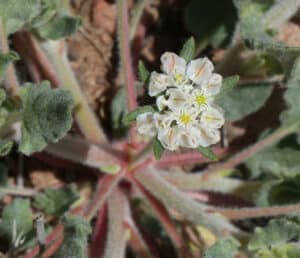
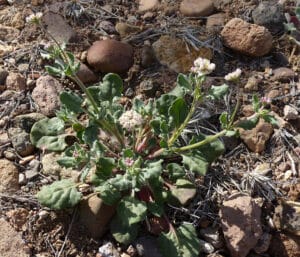
This tiny little herb is found growing close to the ground along the upland trails and on the flats around the Casitas, especially near the hot tub. A decoction of the the plant was used by the Native Americans to treat skin cuts on humans and horses.
APACHE PLUME (Fallugia paradoxa)
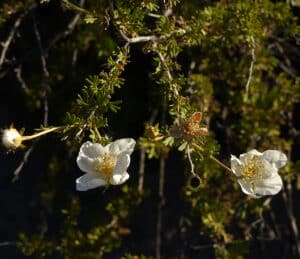
This small perennial shrub is found within the dry washes and adjacent to the Bear Creek floodplain. It was use by Native Americans for a variety of uses including:
• Used in witchcraft to cause insanity
• Used as a cold infusion of leaves as an emetic in ceremonies
• Used as infusion of leaves as shampoo to promote growth of hair
• Brush used in making rough brooms
• Used in basket making
• Used as ladderback rungs in the making of cradleboards
• Straight stems and branches used to make arrow shafts
ARIZONA SCORPIONWEED (Phacelia arizonica)
This strange looking, little, ground-hugging perennial herb is found growing on the flats behind and around the Casitas.
BLACKFOOT OR PLAINS BLACKFOOT-DAISY (Melampodium leucanthum)
This attractive little perennial herb grows in clumps on the sandy flats and the rocky slopes of Bear Creek Canyon.
BLUE SCORPIONWEED (Phacelia coerulea)
This attractive annual herb is found growing in abundance all over the Casita uplands, primarily under the juniper trees, but also on the slopes above our road.
CORKWING-WAFER-PARSNIP (Cymopterus multinervatus)
This rather odd-looking small perennial herb is found growing sparsely around the sandy flat around the Casitas. It is reported that the roots of this plant were eaten in the Spring by some Native Americans.
DESERT DANDELION or FENDLER’S DESERT DANDELION (Malacothrix fendleri)
This annual herb is the desert equivalent of the ubiquitous lawn dandelion. It is found on the sandy flats around the Casitas.
DESERT MARIGOLD (Baileya multiradiata)
This beautiful annual, biennial and perennial herb is found all over the Casita lands. Normally it does not appear here until later in the Summer. It was reportedly used by Native Americans as an underarm deodorant, as well a binder for making adobe bricks and wall plaster. It was also used as poultice of leaves on sores and as a cold infusion for an eyewash for sore eyes.
FENDLER PENSTEMON or FENDLER’S BEARDTONGUE (Penstemon fendleri)
This splendid perennial herb is found sparsely over all the Casita uplands following a wet Winter. It was used by Native Americans in making a poultice for arrow and gunshot wounds.
SOUTHWESTERN INDIAN PAINTBRUSH or FOOTHILLS PAINTBRUSH (Castilleja integra)
This brilliant flowering perennial herb is typically found slightly hidden in the shade under a Juniper tree on a north facing slope at the Casitas. A real treat during the years when it blooms.
GORDON’S BLADDERPOD (Physaria gordonii)
This annual herb is characterized by its bright yellow flowers and globose fruits. It is widespread over the Casita lands, especially along the entrance road.
GRAY FIVE EYES (Chamaesaracha coniodes)
This perennial herb with many branches often appears to be a clump of plants rather than a single one. It occurs sparsely scattered over the Casita lands both on the flats and along the dry wash canyons.
FENDLER HEDGEHOG CACTUS (Echinocereus fendleri)
Typically partially hidden and unnoticed under a mesquite, this lovely perennial cactus suddenly becomes the center of attention around the Casitas when the huge magenta flowers unfurl in the Spring.
INDIGOBUSH or FEATHER PLUME (Dalea formosa)
This plant is a small, woody, perennial shrub that is covered with a profusion of purple and yellow flowers in the Spring. At Casitas de Gila it is found generally on north-facing slopes of dry washes. Native Americans used an infusion of the leaves as an emetic and a decoction of leaves were taken as a cathartic. Runners used an infusion of the leaves to increase endurance and increased lung function.
SCARLET GLOBEMALLOW (Sphaeralcea coccinea)
This common bright little perennial herb grows in exceptional profusion over all of the Casita lands. It was extensively used by Native Americans in a variety of ways:
• Ceremonial medicine drug and fumigant
• Poultice of roots applied to sores
• Chewed plant used on sores and wounds
• Dried plant used as a dusting powder for sores
• Used to make a lotion for skin diseases
• Used as a medicine to give strength for singing
• Used to make a beverage
• Used as a tonic to improve appetite
• Infusion of plant used for swellings and to stop bleeding
• Infusion of plant taken for diseases caused by witchcraft
• Roots chewed during food shortages
SHORT-STEMMED LUPINE (Lupinus brevicaulis)
This distinctive little annual herb is found amongst the rocky flats and hillsides at the Casitas. It was used by Native Americans as a liniment for boils and as a treatment for sterility.
SILVERY MORNING GLORY or SILKY EVOLVULUS (Evolvulus sericeus)
This eye catching little perennial herb is found amongst the rocky canyon sides of Bear Creek at the Casitas.
SPREADING FLEABANE or FLEABANE DAISY (Erigeron divergens)
This common biennial herb is found growing in profusion everywhere on the Casita lands. This plant was another important plant in the Native American pharmacopoeia, where it was used in a variety of ways:
• Infusion of plant taken as an aid in childbirth
• Used as a snuff for headaches
• Cold infusion of plant taken and used as a lotion for “lightning infection”
• Cold, compound infusion used as an eyewash
• Compound used for snake bites
• Root used as a “life medicine”
• Used ceremonially in a variety of ways
• Considered an omen of good fortune and kept in the home
WHITE STEM EVENING PRIMROSE (Oenothera albicaulis)
In years of ample Spring rain this striking annual herb can form an extensive, almost solid ground cover of large white flowers in the Gila Valley. Here at the Casitas their blooming was less extensive, more like a light sprinkling of giant white snowflakes everywhere you looked glistening in the morning sun. Native Americans made extensive medicinal use as well as other applications of this plant:
• Poultice used for swellings
• Dried flowers used as ceremonial medicine used to ward out a cold through prayer
• Decoction of root taken and used as lotion for sore and strained muscles, a life medicine
• Compound poultice used for throat trouble
• Fruits eaten as food
• Seeds ground and made into gravy
• Seeds boiled in soups
• Flowers worn by unmarried maidens in hair on holidays
• Chewed blossoms rubbed on the bodies of young girls so they would dance well and insure rain!
• Dried plant used for tobacco
TEXAS TOADFLAX (Nuttallanthus texanus)
This tall, delicate, thin-stemmed annual and biennial herb could be easily missed were it not for the striking racemes of lavender colored flowers which form at the top of the tall stems.
TIDYTIPS (Layia glandulosa)
This small annual herb is indeed a tidy little plant, and is found on the rocky slopes of Bear Creek Canyon at the Casitas. Native Americans collected the seeds from this plant which they ground into flour to make porridge.
TRAILING WINDMILLS (Allionia incarnata)
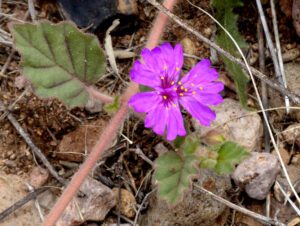
This ground-hugging annual and perennial herb is easily identified by its pink windmill-shaped flowers which form on long stems. It is found all over the Casita lands. It, like many other plants in this blog, was used by Native Americans to make a cold infusion for treating swellings.
WHITESTEM STICKLEAF or WHITESTEM BLAZINGSTAR (Mentzelia albicaulis)
This prolific little annual herb is found all over the flats and hillsides around the Casitas. This is another of the plants which served as a general store for the Native Americans, providing food and medicine in a variety of ways:
• Ground seeds used as dressing for burns
• Compound containing leaves used for snakebite
• Parched seeds ground into flour and made into porridge, soups or snacks
• Parched seeds ground and made into seed butter and eaten on bread or with drinks
• Fried seeds and water used for gravy
• Seeds dried and stored for future use
• Dried plant used as tobacco
A Parting Look at an Incredibly Beautiful Plant
A few days after completing the research on the plants identified and described above, an incredibly beautiful flower was observed along the entrance road coming into the Casitas de Gila Guesthouses.

